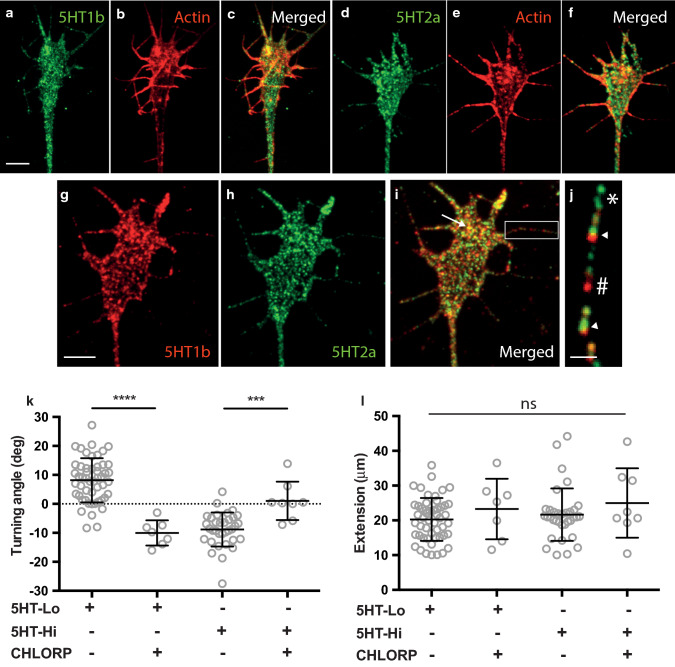Fig. 2.
5-HT1b and 5-HT2a receptors are expressed in growth cones and filopodia. a–j Sensory neuron growth cones immunostained for serotonin receptors, 5-HT1b (green in a, red in g), 5-HT2a (green, d and h) as well as filamentous actin to highlight the extent of the growth cone (Phalloidin, red; b and e). The receptors 5-HT1b and 5HT2a were observed as a widespread punctate distribution throughout the growth cone (g–h). Punctate expression was evident in filopodia (j) with isolated 5-HT1b (green, *), 5-HT2a (red, #) as well as colocalised (arrowheads) puncta on filopodial shafts. There was prominent colocalization of 5-HT2a and 5-HT1b receptors in peripheral areas (i, arrow). Scale bars are 5 μm (a–i) and 1 μm (j). k Turning responses to serotonin were sensitive to chlorpromazine. Attractive turning of growth cones to 5HT-Lo (n = 7, p = <0.0001) and repulsion to 5HT-Hi (n = 8, p = 0.003) were significantly different when cultures were treated with chlorpromazine. l Axon extension was not significantly different in any experimental treatments (ns, p > 0.05). (Mann–Whitney u-test)

